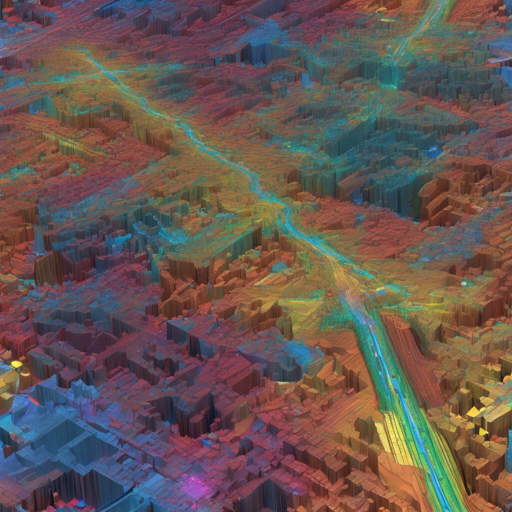If you’re venturing into the fascinating world of aerial lidar scanning and point cloud segmentation, you’ve landed in the right place! The FRACTAL-LidarHD_7cl_randlanet offers robust potential for semantic segmentation, allowing you to categorize and analyze complex terrain and structures found in aerial data. This guide will walk you through how to set up and utilize this powerful model, along with troubleshooting tips along the way.
What is FRACTAL-LidarHD_7cl_randlanet?
This model is tailored for the semantic segmentation of Lidar HD point clouds, focusing on categorizing regions into seven classes, which include:
- Other
- Ground
- Vegetation
- Building
- Water
- Bridge
- Permanent Structure
It uses high-density point clouds (~40 pts/m²) and incorporates both RGB and near-infrared data for enhanced modeling, perfect for complex terrains.
How to Get Started with the Model
To get started with the FRACTAL-LidarHD_7cl_randlanet, follow these steps:
- Set Up the Environment: Ensure you have Python and Pytorch installed. Clone the model’s code repository from github.comIGNFmyria3d.
- Load Your Data: The model is designed for Lidar HD point clouds. Make sure your data is appropriately processed to match the specifications.
- Running Inference: Use the instructions detailed in the code repository to perform inference on your point clouds. You can handle large datasets using patched inference with or without overlapping sliding windows.
Understanding the Model
Imagine the FRACTAL-LidarHD_7cl_randlanet model as a skilled artist with a unique palette that allows the artist to paint a landscape with intricate details. In this analogy, the aerial lidar data serves as the canvas, while the categories (ground, vegetation, buildings, etc.) are the colors. Just as an artist meticulously chooses colors to represent the different elements of a scene, this model processes point clouds to identify and classify various aspects of the landscape based on the provided data. The model respects the rich intricacies of its ‘canvas’ and demands high-quality data inputs for optimal performance.
Evaluation Metrics
The model evaluates its performance using a variety of metrics like Mean Intersection over Union (mIoU) and others. For instance:
- mIoU for FRACTAL dataset: 77.5%
- IoU for Building Class: 90.4%
- IoU for Vegetation Class: 93.8%
Bias, Risks, and Limitations
While the FRACTAL model excels in its domain, be aware of potential limitations:
- Spatial Generalization: It was trained with data from specific southern regions of France; thus, additional checks are vital when applying it to new areas.
- Adaptation for Other Data Sources: Performance might decrease when using different types of point clouds due to specific training data characteristics.
Troubleshooting
If you encounter issues during setup or inferencing processes, consider the following troubleshooting suggestions:
- Ensure that your specified dataset conforms with the input requirements of the model.
- If the model underperforms, check if your point clouds have the necessary characteristics, such as point density and color fidelity.
- Refer back to the documentation for further guidance and detailed instructions.
For more insights, updates, or to collaborate on AI development projects, stay connected with fxis.ai.
Conclusion
The FRACTAL-LidarHD_7cl_randlanet model stands as a testament to the advancements in semantic segmentation within aerial lidar processing. By understanding its setup, usage, and limitations, you can leverage its capabilities to derive meaningful insights from complex spatial data.
At fxis.ai, we believe that such advancements are crucial for the future of AI, as they enable more comprehensive and effective solutions. Our team is continually exploring new methodologies to push the envelope in artificial intelligence, ensuring that our clients benefit from the latest technological innovations.

